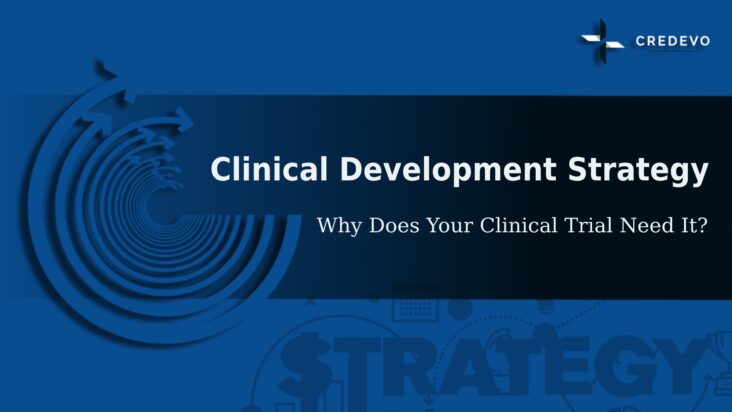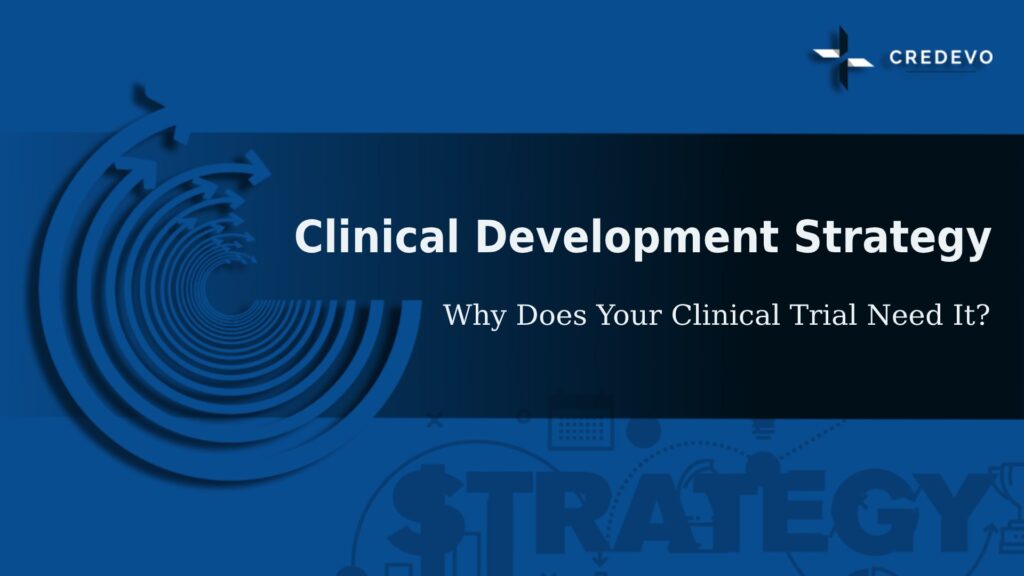Drug Development Strategy: Why Does Your Clinical Trial Need It?

Drug development is a lengthy, complex, and costly process entrenched with a high uncertainty that a drug will successfully reach the market. So for this, you need a proper drug development strategy to avoid uncertainties and complete clinical trials in time with quality data.

Drug development is the process to bring a new pharmaceutical drug or a medical device, or a treatment procedure to the market. Many developers often lack a clear and optimized development strategy. It may lead to failure in reaching pre-determined targets and timelines or even may lead to product failures.
Every drug development process is Unique
Every newly discovered drug or medical device has its unique pathway to reach the market. Many factors vary from product to product, such as
- type of product,
- the category it belongs to,
- disease prevalence,
- study design,
- regulatory pathway,
- phases of trials that need to conduct, etc.
Proper strategic planning reduces financial burdens, saves time, and finds the best efficient way to reach the market.
Steps in drug development
General drug development involves the following steps
- Pre-clinical development
- Pharmacodynamics
- Pharmacokinetics
- Toxicology
- Safety human dose identification
- Clinical development
- Phase 0, Phase I, Phase II, Phase III, Phase IV studies (pivotal studies), and
- Proof of concept trials
- Market approval
- Country selection for marketing
- Regulatory process
- marketing
Depending upon the product, a researcher can add or skip one or more steps for development.
From the strategic view, one can take the entire process from a different perspective.
- Pre-clinical development strategy
- Clinical development strategy
- Marketing strategy
So before going into the details, let’s understand drug development strategy.
A comprehensive drug development strategy
A comprehensive drug development strategy is a detailed roadmap for advancing a new compound from the lab through each stage of development, ultimately arriving at the envisioned marketed drug product.
It requires a multi-disciplinary project team of experienced experts in strategic planning, which outlines
- chemistry, manufacturing, and controls (CMC) and formulation activities,
- key nonclinical studies,
- Phase I-III clinical trials, regulatory submissions,
- health authority interactions,
- market launch activities, and
- life-cycle management.
What is a drug development strategy?
A drug development strategy is an optimized and dynamic process that moves forward in defined stages. It is a carefully planned set of steps, visionary interpretations progressing from pre-clinical to the first-in-human Phase I to Phase II “proof of concept” and pivotal Phase III trials for registration.
The drug development process is not as simple as it looks and involves various strategic steps that can skip some procedures, reduce timelines and costs, and present the most precise pathway.
A proper clinical development strategy should answer the following questions
- What is the end goal of a pharmaceutical product or medical device?
- What are the desired product attributes: indication or usage & dosage, administration & pharmacology, adverse reactions & toxicology, clinical data, clinical safety, and efficacy?
- Identify the most feasible country for clinical trials with global data acceptance, developmental infrastructure, and effective clinical developmental costs.
- Identifying the most efficient and effective ways for clinical developments
- Potential market and marketing strategies.
“When you are not clear about the development path, how sure do you reach the destination?”
Clinical development strategy
Most start-ups, small- or mid-sized pharmaceutical, biotech, or medical device companies lack the resources and the time to build a detailed research strategy and an extensive and precise roadmap to complete the clinical development process.
While designing a successful clinical development strategy, sponsors shall not only consider the regulator’s needs but need to identify the optimized pathway, anticipate hurdles, and understand the market and product uniqueness.
Failure in creating such roadmaps leads to unnecessary processes, project delays, management failures, unexpected costs, budget burdens, market failures, etc.
The development strategy includes
- Product risk assessment and market evaluation
- Precise pathway recommendation and country/s selection
- Plan key studies required, establish efficient and effective study designs
- Identification of clinical investigators, research sites, etc.
- Strategic plans for regulatory submissions and regulatory agency interactions
- Ensure to obtain faster regulatory approvals, incentives, etc.
Let’s discuss one by one how the clinical development strategy benefits drug development.
Product risk assessment and market evaluation
- Before starting any clinical development and after pre-clinical studies, the results and outcomes need to be keenly evaluated for the likelihood that the product is good to move ahead and check whether the pre-clinical data complies with the regulatory requirements.
- It is crucial to avoid unnecessary processes, costs, and time. One can achieve this through risk-benefit assessment and regulatory understanding.
- For some high-risk products, Risk Evaluation and Mitigation Strategies (REMS) strategy can be thought out.
- Market evaluation is a crucial step before planning any process. It is critical to answering basic questions like,
- Does your drug/medical device have competitors?
- If yes, does your research overweigh the existing drug market? and
- What is the market forecast (by the time the product reaches the market)?
Precise pathway recommendation and country/s selection
- No drug follows the same clinical development path and varies with many factors. Hence there is no established gold standard set of steps.
- For example, the FDA suggests seamless trial designs, which compress the phases of a trial into one sequential clinical trial for orphan drugs.
- Some drug categories have exceptions to submitting the clinical trial data after market approvals. Hence for developing a route map, one should be thorough about both the regulatory and the drug under evaluation.
- Some drug categories have access to accelerated and Fastrack approvals with minimal or no regulatory fee, priority review, application & evaluation fee exemptions, etc. The development team needs to explore such options.
- The country/’s selection for conducting clinical trials is critical in the clinical development process. Region selection depends on product-related factors, regional factors, past trial experiences, etc, and country-level feasibility helps identify the best country/s for clinical development.
- This process evaluates the regulatory aspects, ICH and GCP compliance, ethics approval scenario, disease prevalence of target treatment, available patient population, patient recruitment, and retention potential, qualified professionals, and facilitated site availability, logistics & site reach convenience, global acceptance of data generated and many more,
Plan key studies required, establish efficient and effective study design
- Depending on the risk and the product category, the development planner needs to establish the required studies and proper study design to comply with the regulatory requirements. An ideal study design utilizes minimum resources and yet produces efficient data.
- Strategic planning includes an efficient study design, assessment criteria, number of subjects required, number of study sites, analyzing the inclusion and exclusion criteria, etc.
- Considering adaptive trials, combining phases of trials, planning proof-of-concept trials, and implementing new modern study designs such as umbrella, basket, and platform trials are part of the strategic planning.
Identification of clinical investigators, research sites, etc.
- 90% of clinical trials fail in meeting timelines and proposed budgets. It is for reasons like recruitment failures, inefficient professionals, trial initiation delays, site incapabilities, etc.
- Hence, finding the right qualified investigators and facilitated sites are crucial for any successful clinical trial. Conducting clinical trial feasibility in the clinical development strategy helps find many of these answers.
Strategic plans for regulatory submissions and regulatory agency interactions
- The regulatory submission is crucial after each successful phase of the clinical trial. Proper monitoring and timely outcome assessment are critical to avoid regulatory submission delays and process failures.
- Drug regulations can be complicated and often vary among countries/regions regulators such as FDA, TGA, EMA, PMDA, KFDA, CFDA, etc. One needs to have a clear idea of regulatory requirements, identify pros and cons, and study outcome assumptions. Combining scientific drug development expertise with thorough regulatory knowledge could help achieve this.
Special considerations such as faster regulatory approvals, incentives, etc.
- Strategic development planning involves the evaluation of various regulatory pathways that Fastrack the approval process or provide incentives or provide developmental benefits.
- For example, regulators like the US, EU, Australia, Japan, and many more offer tax benefits and developmental convenience for orphan drugs (a drug for rare diseases)
- FDA offers recommendations for innovative products and benefits for SMEs (Small and Medium Enterprises). EMA also provides special considerations for SMEs. Countries like Japan and China accept foreign clinical trial data in some circumstances. These regulatory understandings help skip some development steps and ease the market approval process.
- Hence, in conclusion, establishing a clinical development strategy before initiating clinical trials always helps to determine a clear path and be sure that every step is going in the right, precise, and cost-effective way.
Click here to know the drug development strategy In Japan
Credevo clinical development strategy services
Discuss your clinical development needs with us. We will help you develop a strategy for an effective and efficient clinical development pathway.